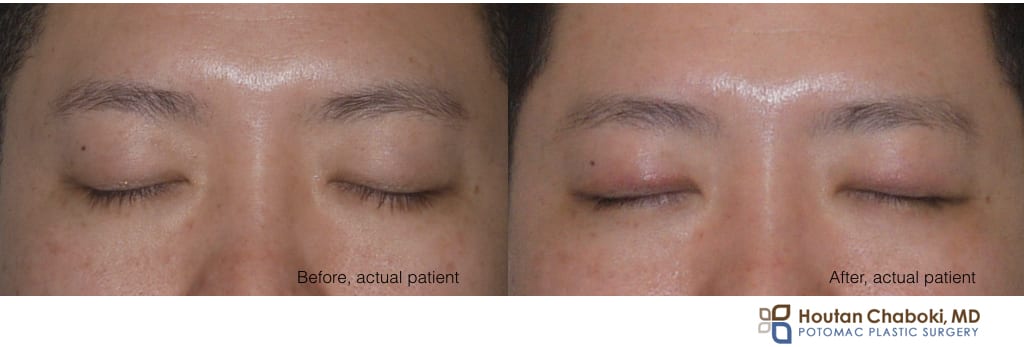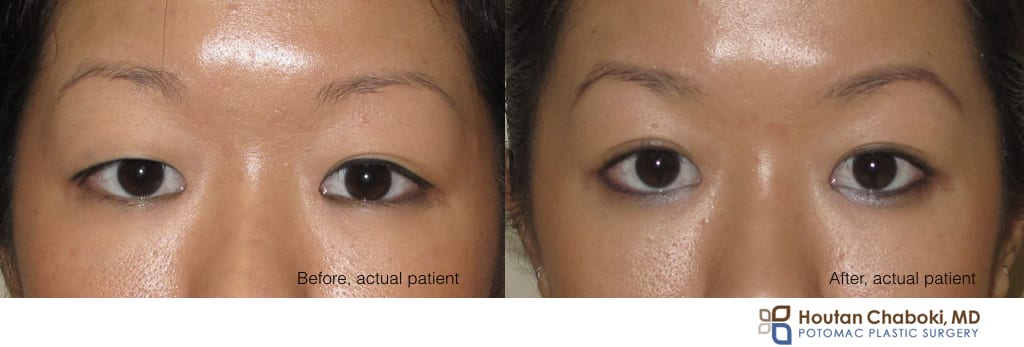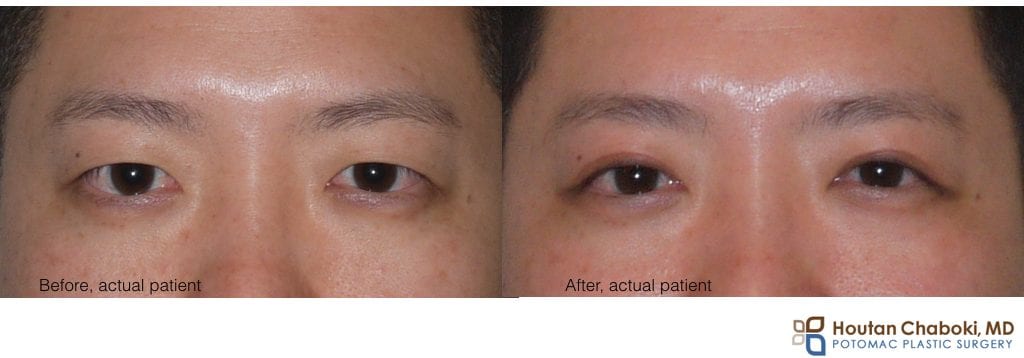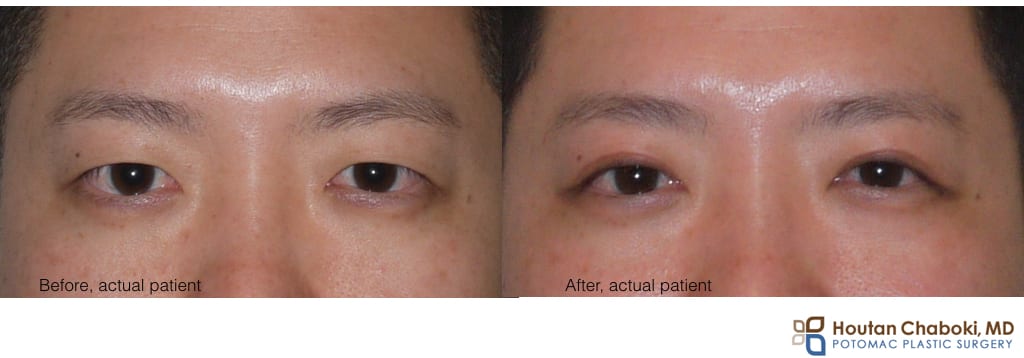Blepharoplasty (i.e. eyelid surgery) is one of the most popular plastic surgery procedures in Asian countries. Patients seeking blepharoplasty consider bigger eyes more attractive and request more “open” eyes. Prior to having plastic surgery, they have used tape or glue in the upper eyelid to temporarily create the effect of a double eyelid.
We’ve reviewed Asian eyelid surgery in a previous blog post. Here we review some of the technical differences between the two major plastic surgery approaches for double eyelid surgery: suture and incisional.
Why does the eyelid lack a crease in Asian eyelids?
The upper eyelid crease or fold is often absent, which allows excess tissue to hang lower and make the eye appear relatively smaller. Anatomically, the Asian eyelid has relatively more skin and fat, regardless of patient’s age. More importantly, there is a lack of a fibrous adhesion between the more superficial skin and muscle with the deeper eyelid muscle and tissue. Eyelashes may also be more hidden as a result.
The degree of the eyelid fold is also variable, as some patients may have a partial fold present. The eyelids can be asymmetric with only one side with a crease or creases of different shapes and sizes.
How is upper eyelid surgery performed?
Asian blepharoplasty (i.e. creating a double eyelid) in Washington DC is performed in the plastic surgery office via strictly local anesthesia. The skin area is numbed, and the patient is awake and comfortable during the brief procedure. The procedure takes about an hour.

Before and after Asian double eyelid surgery with the incision technique. The incisional scar is well hidden for natural results.
What is the difference between the suture and incision techniques in Asian blepharoplasty?
Plastic surgeons use two primary methods to create a double-fold in Asian blepharoplasty: suture technique and incision technique. Each procedure, similar to any plastic surgery, has its inherent advantages and disadvantages. There isn’t a “best” plastic surgery by the “top” plastic surgeons.
Both techniques create a double eyelid by applying stitches from the superficial eyelid muscle and skin to the deeper eyelid muscle. As a result of these deep stitches, the upper eyelid is “folded” upward. A fibrous band or internal scar then develops to help maintain the shape and appearance of the crease as these sutures gradually dissolve.
The suture technique achieves the double eyelid without an external incision. The benefits of the suture technique are that it’s a faster procedure to perform, less invasive, faster recovery, and less swelling. The problems with this method, however, is that it does not remove skin and it has a much higher chance of failing to maintain the crease. More patients after the suture technique will need a revision procedure for losing the crease, as it may not be permanent. In addition, since skin is not removed, the results may appear sub-optimal in patients with excess skin. Lastly, fewer patients are appropriate candidates for this method of eyelid surgery.

Before and after Asian double eyelid surgery with the incision technique on the right upper eyelid. Initially, the suture technique was used by a surgeon in China on both eyelids, but the right side lost the crease after the original plastic surgery. Revision upper blepharoplasty with the incisional method improved her eyelid asymmetry.
The incision technique creates an incision along the upper eyelid, which is hidden. Excess skin and fat is removed during this approach to upper eyelid surgery. The benefits of incision technique is that it creates a more stable, long-term crease. In addition, since skin is removed, the eyes are more likely to appear more open. The potential downside of incision technique is more scarring and longer swelling period, as compared to non-incisional technique.
What is the best upper blepharoplasty technique for Asian eyelid?
There isn’t a “best” approach, as with any cosmetic procedure. The decision for cosmetic surgery is mutually determined by the patient and surgeon.
Have you considered eyelid surgery? Share your thoughts below.



Nicely written. Very informative
Thank you for reading the blog! As cosmetic surgery specialists, we try to provide information to help our patients make informed decisions.
Best,
Dr. Chaboki